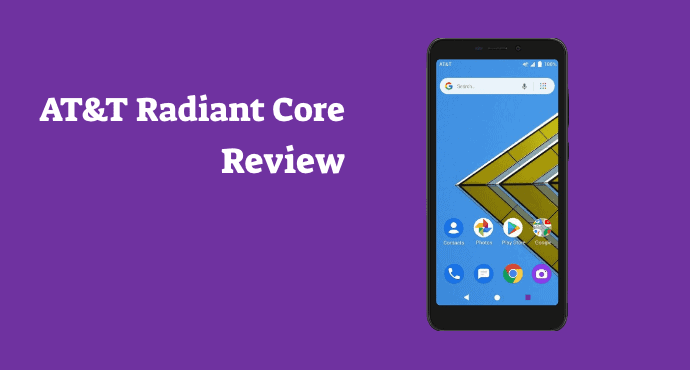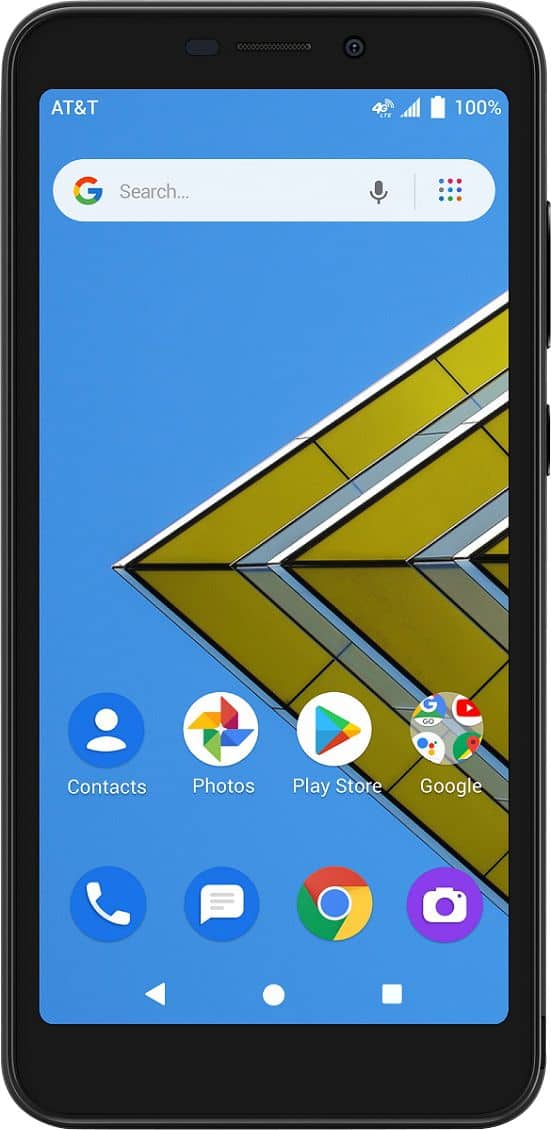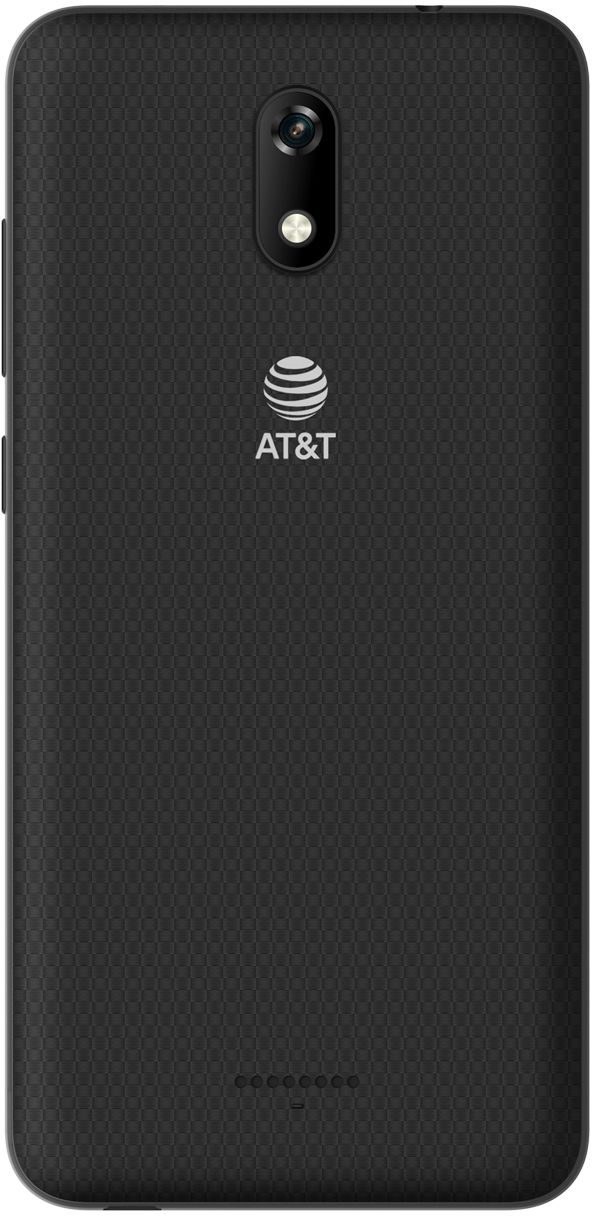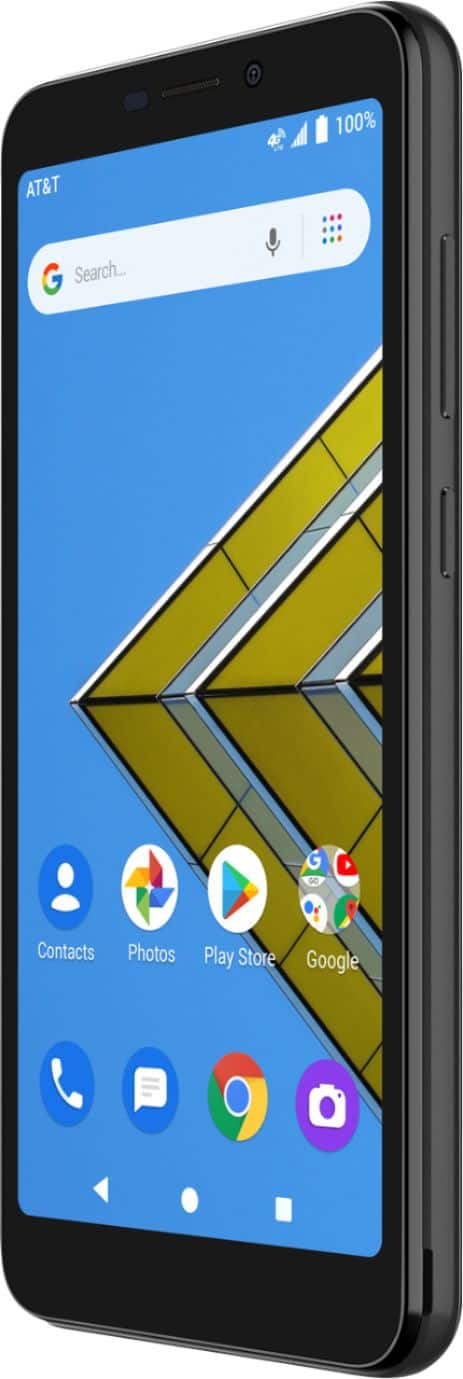Affordable smartphones can be attractive, but are they worth it? Check out our elaborate AT&T Radiant Core review for all the details.

AT&T Radiant Core smartphone was released in October 2019. The most sought after devices are the ones that come in complete packages. It should connect us to the world and contain all of the necessities.
AT&T Radiant Core also known as Emblem Solutions LLC U304AA phone. Not long ago, this device made its debut into the smartphone market. Developers ensured that the device is equipped with solid attributes for proper usage.
However, the smartphone’s low price point has raised several concerns amongst the public. The device is cost-friendly, but is it durable enough to operate in the long run?
Our AT&T Radiant Core (U304AA) review will straightly get to the bottom of your worries. Be sure to read up to see if this smartphone deserves a chance.
Page Contents:
Key Specs
AT&T Radiant Core (U304AA) specifications:
- Weight: 172g
- Dimensions: 150.11 x 72.89 x 9.9mm
- OS: Android 9.0 Pie (Go Edition)
- Screen size: 5.5-inch
- Resolution: 960 x 480
- CPU: 1.5GHz Quad-core, MediaTek MT6739
- RAM: 1GB
- Storage: 16GB
- Battery: 2,500mAh, Removable
- Rear camera: 5MP
- Front camera: 2MP
Design

The AT&T Radiant Core has a portable build but feels rather outdated with its appearance. Right off the bat, the device reminds us of old budget phones developed in previous years. Despite the vintage-looking aesthetics, its software still gets a modern twist.
On the front side, we have the display surrounded by chunky bezels. The bezel on the bottom side looks especially thicker than the others. Tucked right in the top are the phone’s earpiece and front-facing camera. Upon closer look, we found a small LED notification. It’s barely noticeable, but we recognized it from its blinking light.
The back cover is made entirely out of plastic, layered with a textured finish. The phone’s rear camera is placed in the middle, along with its flash. A backfiring speaker is located on the bottom. There’s not much going on in the back, but the inside is a different story.
Unlike a majority of current phones, we can remove the back cover from the device. Inside the phone are two separate slot trays. One of them is for our SIM card, while the other is for a microSD card. Unfortunately, the device does not accommodate dual SIM cards. Below the trays is a specific port to put in the removable battery.
The rest of the phone’s exterior is kept under a minimalistic phone. The only buttons available are the power button and volume controls. There is also a USB port, microphone, 3.5mm headphone jack, and noise cancellation mic.
Read also: AT&T Radiant Core User Manual
Display

The AT&T Radiant Core (Emblem Solutions LLC U304AA) employs a 5.5-inch display with a 960 x 480 resolution. The display screen uses Dragontrail glass. The brand and material promise protection from any unwanted scratches. Its light-weight material doesn’t add any extra bulkiness. It’s a decent choice for a low-end device.
The device comes in an 18:9 aspect ratio. Despite having a relatively small display, the aspect ratio provides more screen room. We can zoom in videos to make sure they fill up the entire display. However, some of the video content will be obstructed. Optimal wide-screen viewing is not possible with this display.
Sadly, the display leaves a few disappointments with its quality. As previously mentioned, the AT&T Radiant Core has a 960 x 480 resolution. This alone greatly affects our viewing experience. When watching videos, the highest quality we could reach was 480p. While others are enjoying 720 or 1080 pixels, this resolution does not sit right with us.
Another flaw that we have come across is the color quality. Supposedly, the phone accommodates a total of 16.7 million colors. The display screen looks adequate on the home page, but it becomes different when watching videos. We encountered tons of color shifting that leaves the content dull, muted, and grainy.
Camera

The AT&T Radiant Core has a 5MP rear camera and a 2MP front-facing camera. From the megapixels itself, we already know that the cameras are far from decent. There are budget phones out there with an 8MP rear camera and 5 MP front camera. These megapixels do not guarantee us satisfactory photographs.
That didn’t stop us from testing out the cameras. When pressing on the camera shutter, we noticed it does not have auto-focus. As we shift the camera from one image to another, it loses its focus. We attempted to use touch-focus to see if it made a difference, As we had expected, the camera was unable to maintain any focus at all.
This also applies to record videos. According to the phone’s specifications, videos are captured with 1080 pixels at 30 frames per second. Sadly, the videos did not come out as smoothly. The visuals became significantly muddy and grainy.
Compensating for the phone’s poor camera quality are its pre-installed features. We have access to beauty mode and fun filters that we can choose from. There’s also a Geo-tagging extension to keep track of where we shot our photos. Of course, there’s a self-time we can use to properly take selfies.
Read also: AT&T Radiant Max Review: Dirt-cheap phone with triple cameras
Storage
The AT&T Radiant Core contains internal memory storage of up to 16GB. Most smartphones, especially budget ones, typically come with preloaded bloatware. When checking the storage, we found that the bloatware alone has taken up almost 5GB. With more or less 10GB left, there’s so little space to put in our data.
Luckily, the phone lets us install a microSD card to expand storage space. The device allows external memory of up to 64GB. Considering the low price point, we don’t mind that it doesn’t reach up to 128GB. This is a huge plus in our books.
Performance

The AT&T Radiant Core is supported by 1.5GHz Quad-core MediaTek MT6739 processor. This CPU is a piece of technology commonly found in most budget phones. The reason for this is because of its affordability. The chipset guarantees a better balance between performance and power efficiency.
Also, this processor is the thing that makes the phone’s 18:9 display aspect ratio possible. Although the phone’s overall features may not be impressive, the processor doesn’t stop working hard. It continues to power budget phones and provides a sense of reliability in its system.
This AT&T Radiant Core review will look into the phone’s most problematic specification: RAM. The phone only has 1GB of RAM, much less than the average 2GB RAM for budget phones.
These days, smartphones require at least 2.5GB-3GB of RAM to function smoothly. A 2GB RAM by itself will run into some problems, let alone a 1GB RAM.
The RAM size is a major drawback to the overall phone performance. This becomes a shame, especially since it has a moderate processor. A low RAM will cause the phone to slow down its functions. We also noticed that there’s so little power with its performance, making everything sluggish.
The phone operates on Android 9.0 Pie (Go Edition). The operating system has boasted many features that are suitable for budget devices. The Go Edition has been thoroughly optimized to retain its lightness. Since the system doesn’t heavily depend on memory, it will not take up much space.
The downside to the Android 9.0 Pie (Go Edition) is its incompleteness. As discussed beforehand, the operating system is slimmed down to better work on low-end phones. This means minimizing a lot of features that are usually available in normal operating systems. Users are unable to experience the complete package that comes with this OS.
The AT&T Radiant Core only has two available sensors, an accelerometer, and an ambient light sensor. The accelerometer’s main function is to detect movements. It makes sure that the phone can count how many steps we’re taking, and how fast we’re moving. It also accurately shifts the display from portrait to landscape mode.
The ambient light sensor is responsible for adjusting the phone’s brightness levels. Thanks to this sensor, the phone can automatically adapt to its surroundings. Upon closer inspection, the phone can quickly change its brightness under different situations. This is great if we’re constantly going from one place to another.
Connectivity
The AT&T Radiant Core can connect to a 4G LTE network. To do this, we’ll need to install a SIM card beforehand. The phone only supports Nano-SIM cards, which is oftentimes the case with current devices.
Non-data connection users can rely on the 2.4GHz Wi-Fi feature to get connected. There is also a Bluetooth Version 4.2 that supports tethering. When others require our Internet connection, we can turn the phone into a mobile hotspot. It accommodates up to 10 devices at the same time.
Battery
The AT&T Radiant Core is powered by a 2,500mAh removable battery. The surprising capacity is reasonably huge. The battery can last up to 168 hours of non-stop use time. On-standby itself, the battery remains on for up to 20.8 days.
Unfortunately, the battery requires a long time to fill up its juice. The average charging time is 1.17 hours for a 50% capacity. Meanwhile, it takes up to 3.5 hours to get a 100% charge. Better prepare a portable charger for this device. Not everyone is willing to wait for hours to get a proper, full charge.
Is the AT&T Radiant Core a good phone?
Finishing off our AT&T Radiant Core (U304AA) review, we suggest checking out other phones besides this. At a retail price of $29.98, it’s easy to get attracted to its extremely cheap price. However, the money is not worth the lackluster performance we’re getting from this phone.
Budget phones come at all shapes, specifications, and prices. We recommend investing in a budget phone that’s slightly more expensive. Not only will you get a bigger bang for your buck, but you’ll also end up with a device that can last much longer. A smartphone is not an item we purchase every day, so might as well get something high quality.
AT&T Radiant Core Pros
- Decent processor
- Sufficient battery capacity
- Accommodates external memory
AT&T Radiant Core Cons
- Poor display quality
- Disappointing cameras
- Low RAM size
